The Bose SoundLink Revolve II doesn’t look different than its predecessor, and indeed it seems the main differences are improvements meant to make this 360-degree wireless speaker more versatile and practical. The brand improved the dust- and waterproofing of the device, achieving an IP55 rating, and Bose says that “water-resistant design means you can use it more places without worrying about an accidental showering of water, like by the pool or by the kitchen sink.” Bose also added an optional charging dock, another extra element of practicality.
The brand promises 13-hour battery life and a fulfilling musical experience: “A highly efficient transducer. Dual-passive radiators. An omnidirectional acoustic deflector. All of which simply means you’ll get lifelike sound… and real-life goosebumps.”
We put the Bose SoundLink Revolve II through our rigorous DXOMARK Wireless Speaker test suite. In this review, we will break down how it fared at audio playback in a variety of tests and several common use cases.
Key specifications include:
- Bluetooth, 3.5 mm jack input, Micro-B USB port
- 8.2 cm x 15.2 x 18.4 (width x height x depth)
- 0.66 kg (1.45 pounds)
- One full-range downward firing speaker, one omnidirectional acoustic deflector, and two passive radiators, left and right.
Test conditions:
- Tested with Motorola G8 for music / Xiaomi Mi TV Box S for movies
- Communication protocol used: Bluetooth for music / 3.5 mm jack input for movies
- Firmware version: 3.0.4
About DXOMARK Wireless Speaker tests: For scoring and analysis in our wireless speaker reviews, DXOMARK engineers perform a variety of objective tests and undertake more than 20 hours of perceptual evaluation under controlled lab conditions. This article highlights the most important results of our testing. Note that we evaluate playback using only the device’s built-in hardware. (For more details about our Speaker protocol, click here.) The Bose SoundLink Revolve II falls into the Essential category of devices in the DXOMARK Speaker rankings.
Test summary
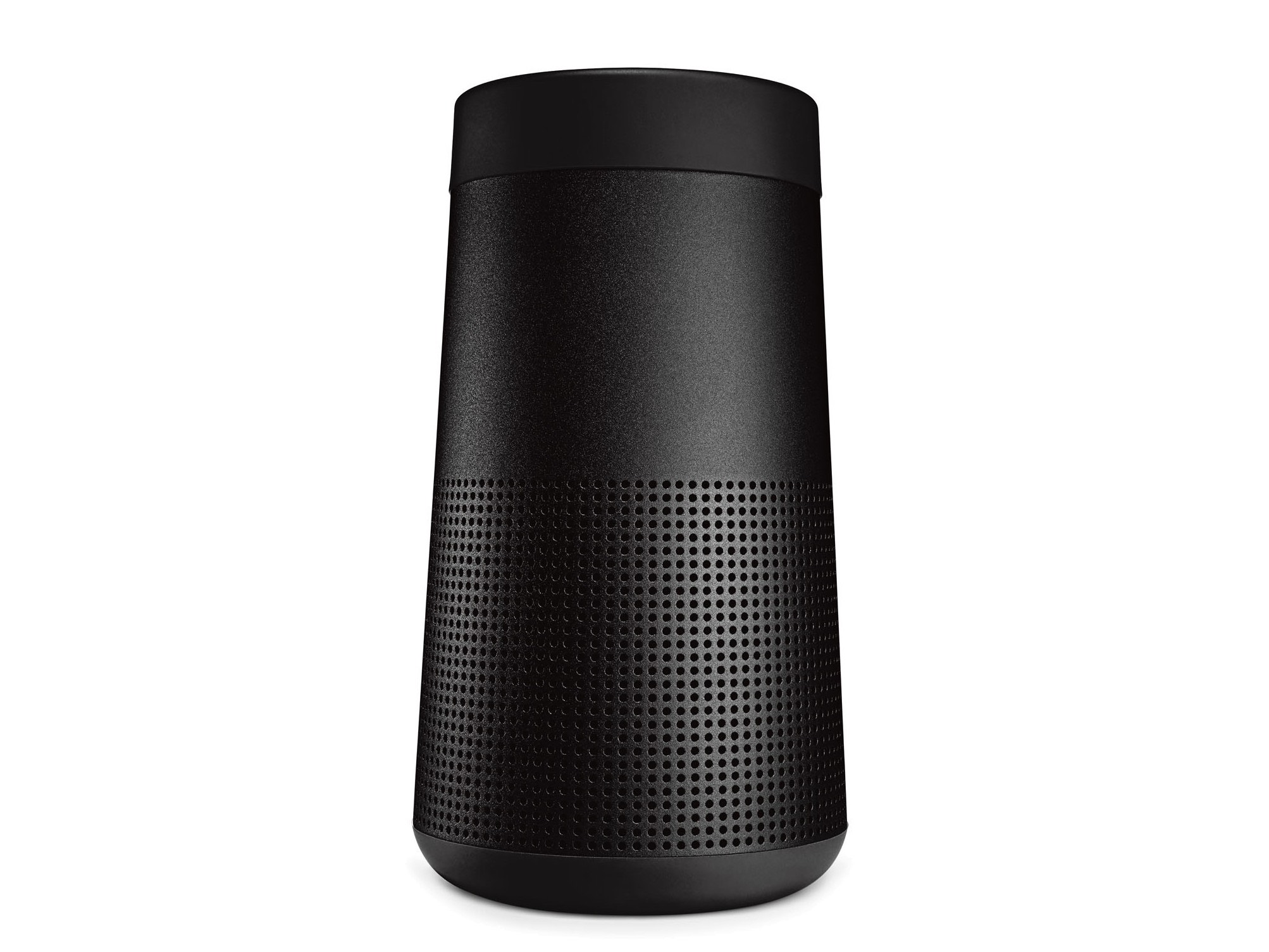 Bose SoundLink Revolve II
Bose SoundLink Revolve II


From a global performance standpoint, the Bose SoundLink Revolve II’s score of 107 puts it in fairly good company, alongside the Amazon Echo 4th Gen, which had a score of 109, and between two other top competitors in our Essential Speakers category: the Google Nest Audio (112) and the Apple HomePod Mini (98).
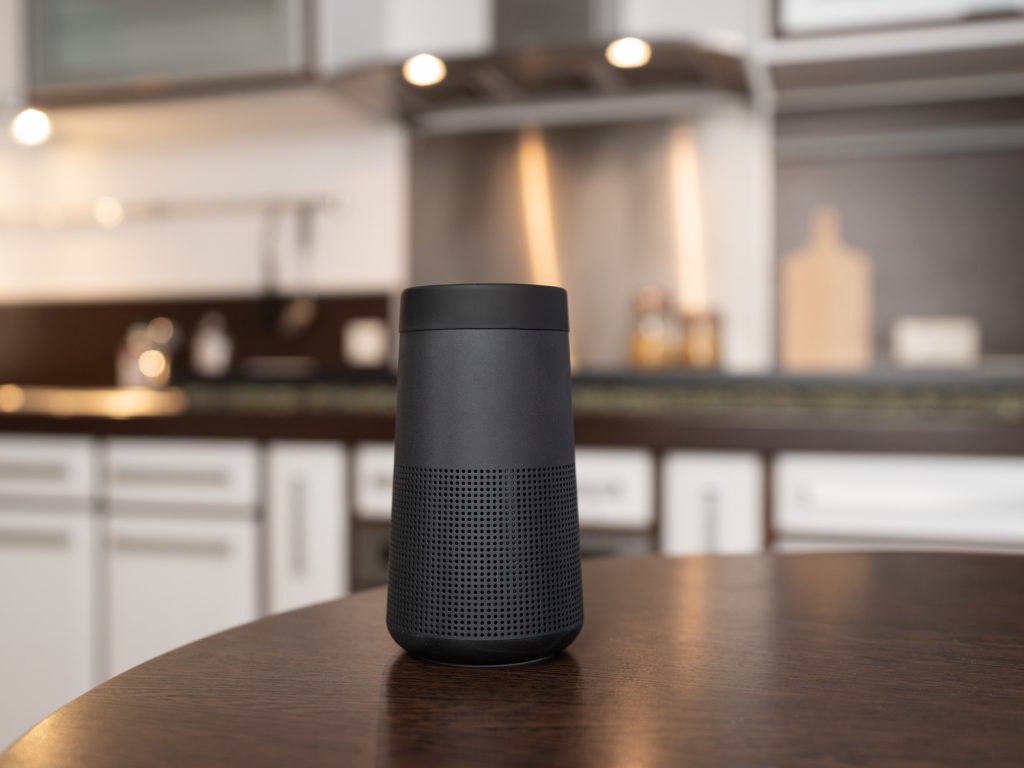
The Bose SoundLink Revolve II performed well overall, with consistent timbre and dynamics performance no matter the orientation of the device. Upper spectrum timbre is good, with decent extension at nominal volume. Localizability is also good, assisted by the performance of the high frequencies. The balance is great — centered content is well rendered, and directivity is also great because the speaker fires in 360 degrees. In most use cases, voice distance rendering is good. The Revolve II has no artifacts at nominal and soft volumes. Another plus: when you use the jack to connect to video content, the audio-video latency is acceptable.
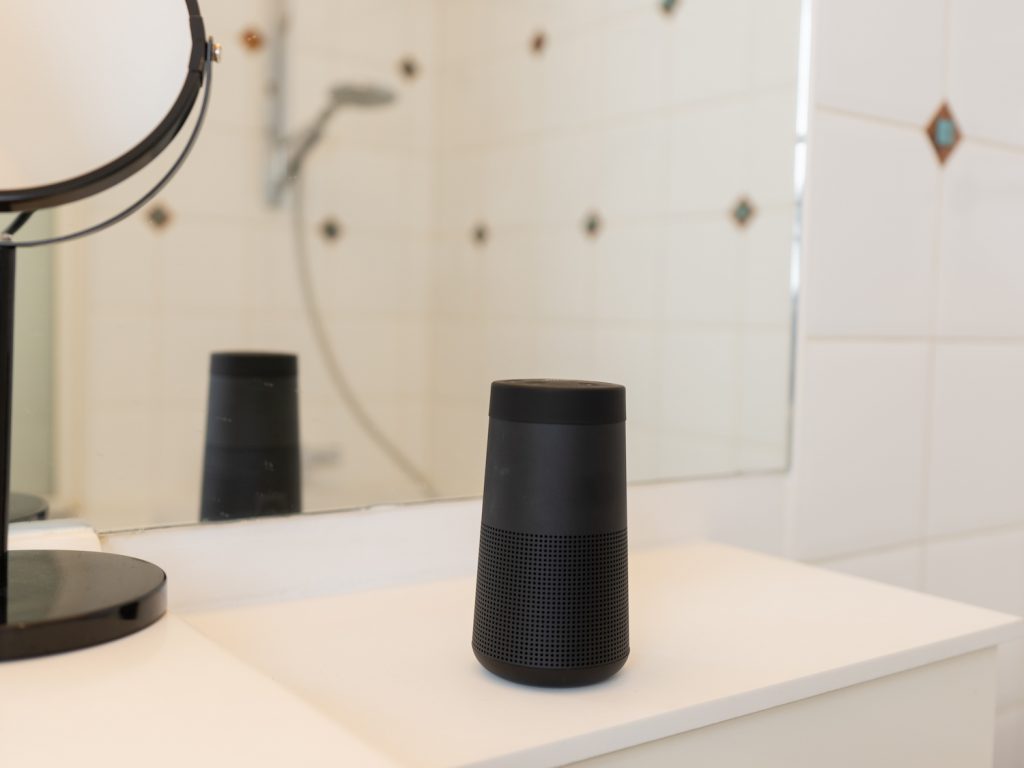
The drawbacks of the SoundLink Revolve II include midrange rendering that is slightly inconsistent, with a small lack of upper mids. At soft volume, tonal balance lacks some high-frequency content. At loud volume, on the other hand, tonal balance becomes very midrange-focused. In the bedtime and bathroom use cases, the 360-degree approach hinders distance rendering, with voices perceived as diffuse or as coming from the back of the device. Because of the setup, the device has no wideness (though Bose notes that it can be synched with a second device). Attack is not precise on high-pitched instruments, while the lack of a lower spectrum impairs both bass precision and punch.
Maximum volume is not loud enough, and the volume steps aren’t consistent overall. At loud volume, strong compression induces noticeable pumping. And the Bluetooth connectivity comes with an audio-video latency that makes it less than ideal for watching video content.
Sub-scores explained
The DXOMARK Speaker overall score of 107 for the Bose SoundLink Revolve II is derived from a range of sub-scores. In this section, we will take a closer look at these audio quality sub-scores and explain what they mean for the user, and we will show some comparison data from two of the SoundLink’s principal competitors, the LG XBoom Go PL 7 and the Sony SRS-XB43.

Timbre
Bose SoundLink Revolve II
152
DXOMARK timbre tests measure how well a speaker reproduces sound across the audible tonal range and takes into account bass, midrange, treble, tonal balance, and volume dependency.
The SoundLink Revolve II performed fairly well in the timbre attribute, with good trebles and high-end extension. The midrange is slightly inconsistent, however, with a slight lack of upper mids, along with low-mid resonances, especially when listening to podcast content. A lack of low-end extension slightly impairs tonal balance. On the plus side, the 360-degree firing design allows a consistent tonal balance whatever the orientation of the device. In quiet environments, our engineers observed a slight lack of upper spectrum content and clarity.
While watching movies, bass can become muddy, and low-mids are too prominent, masking the rest of the mix. And at loud volume, tonal balance becomes very midrange-focused, with metallic trebles. Bass and low-end extension is sorely missed at those higher volumes, which led to a lower score in the party use case.

Dynamics
Bose SoundLink Revolve II
137
Our dynamics tests measure how well a device reproduces the energy level of a sound source, taking into account attack, bass precision, and punch.
When it comes to dynamics, the SoundLink Revolve II was below average. The attack was not very precise on high-pitched contents, and a strong lack of low-end impaired bass precision and punch in most use cases. But because the speaker is omnidirectional, at least attack and precision are consistent, whatever its orientation. In addition to the lack of low-end at loud volume, bass precision and punch are strongly affected by heavy compression. In the video-watching use case, overall dynamics performance was brought down by muddy bass.
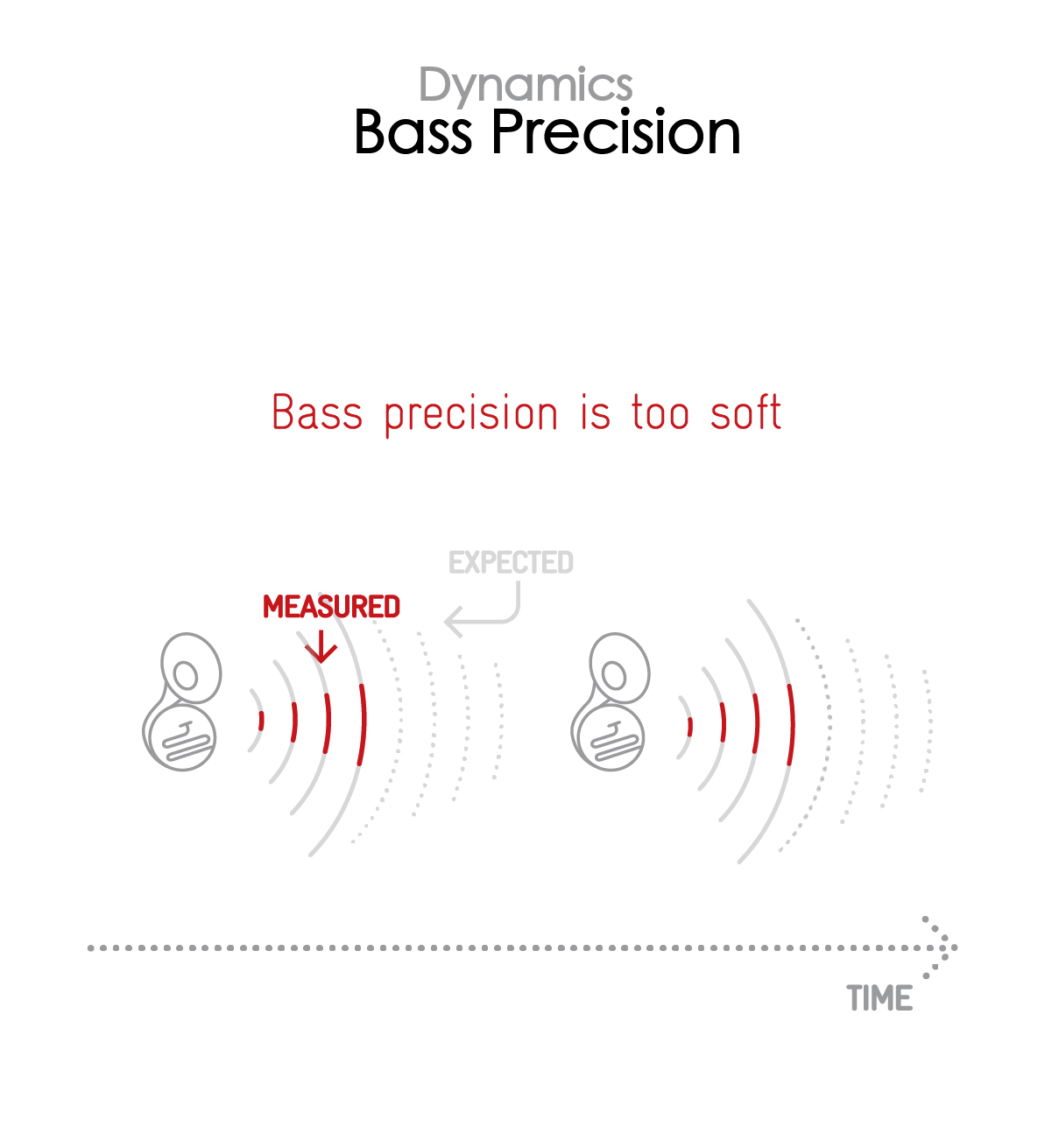
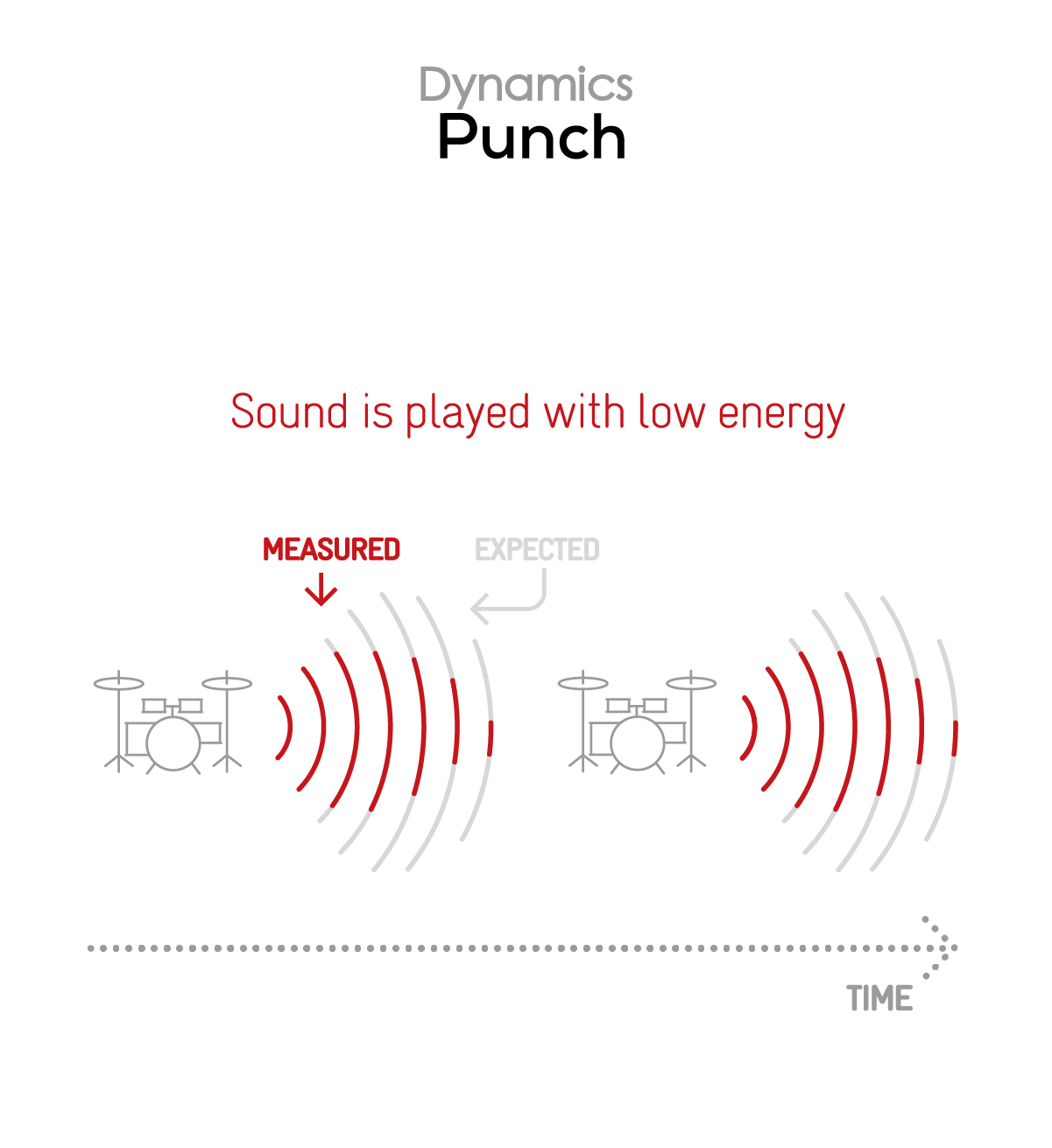

Spatial
Bose SoundLink Revolve II
111
Our spatial tests measure a speaker’s ability to reproduce stereo sound in all directions, taking into account localizability, balance, wideness, distance, and directivity. Please note that wideness is 0 on mono speakers and on speakers that cannot deliver a significant stereo effect.
Spatial is a bright spot for the Bose SoundLink Revolve II, with a good overall performance. Correct trebles and high-end extension — key for allowing the human ear to locate sounds — allows for decent localizability. Balance is great, respecting the position of centered elements. Good distance performance allows for a realistic placement of voices, except in the case of podcast content, where midrange resonances slightly impair voice-distance perception. Directivity is superb because of the 360-degree design of the device.
Voices seem to be coming from behind the device in the bedtime use case because of its omni-directionality, which also created a sense that voices were diffuse and resonating in the bathroom use case. It is worth noting that there is no wideness, also because of the device’s design.
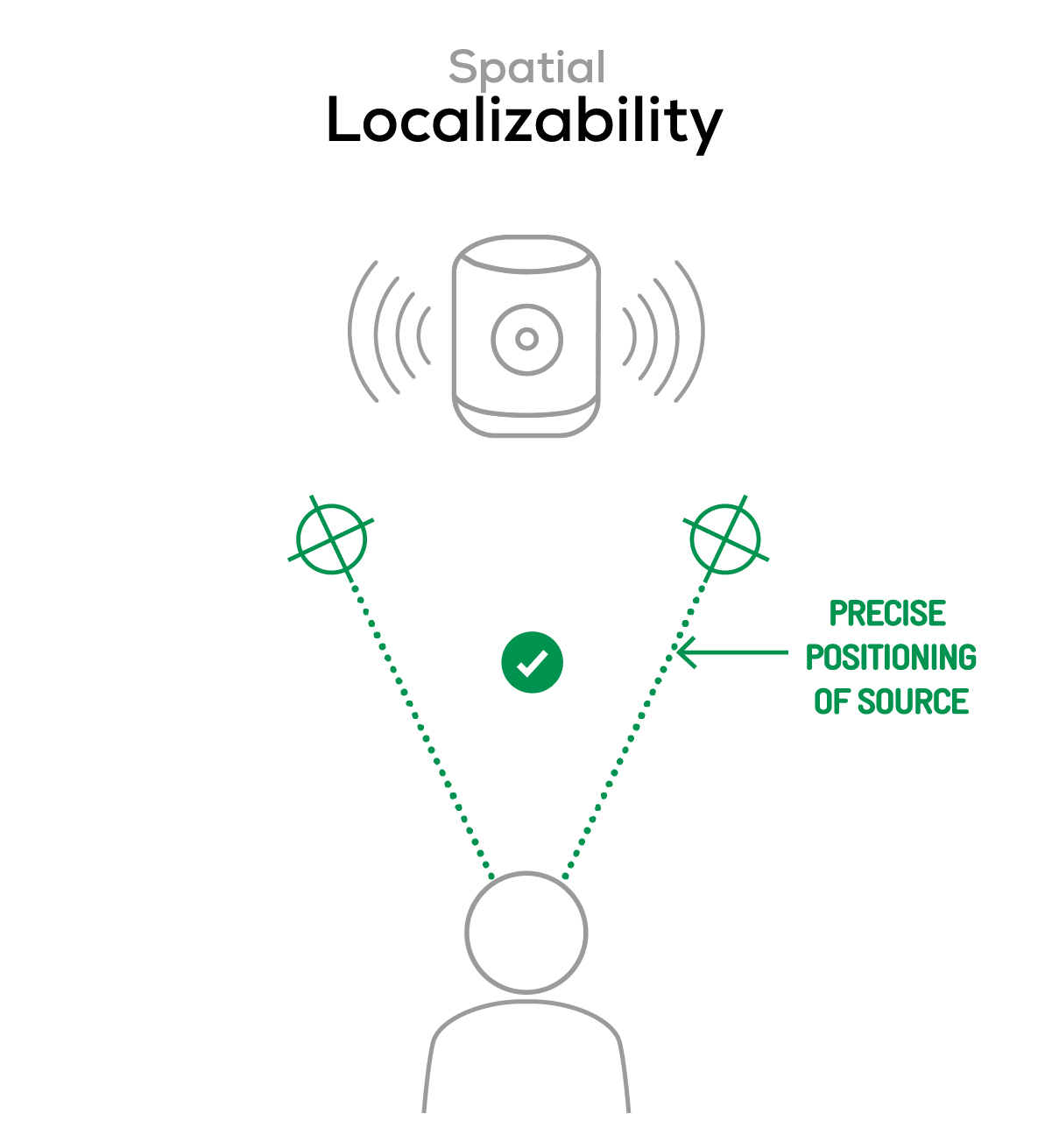
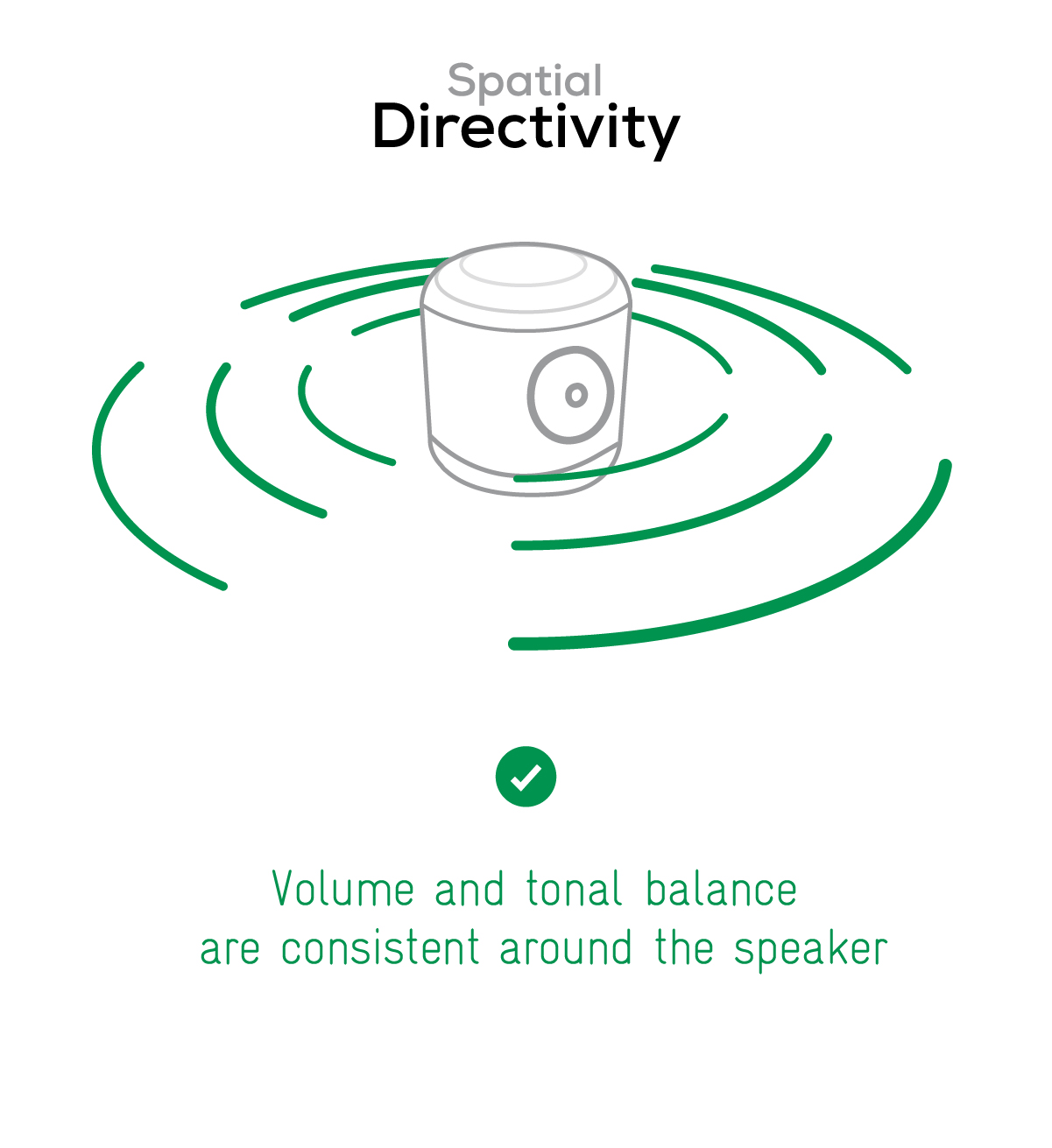

Volume
Bose SoundLink Revolve II
141
Our volume tests measure both the maximum loudness a speaker is able to produce and how smoothly volume increases and decreases based on user input.
Volume was a low point for the Bose device. The maximum volume step is not loud enough when compared with similar-sized devices. And as shown in the graph above, volume steps are irregular. At low volumes, the increase in volume at each step is excessive. The last three volume steps at the high range don’t produce any change in loudness.
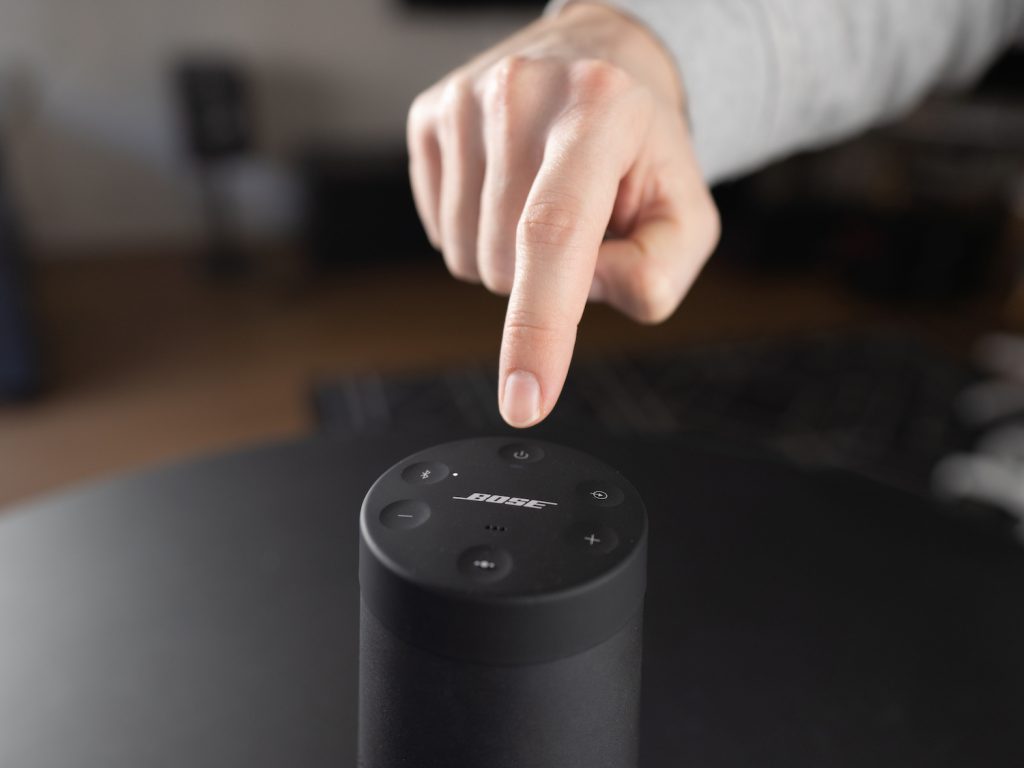
Here are a few sound pressure levels (SPL) we measured when playing our sample recordings of hip-hop and classical music at maximum volume:
| Correlated Pink Noise | Uncorrelated Pink Noise | Hip-Hop | Classical | Latin | Asian Pop | |
| Bose SoundLink Revolve II | 73.4 dBA | 73.6 dBA | 72.5 dBA | 72.6 dBA | 73.9 dBA | 68.7 dBA |
| LG XBoom Go PL 7 | 85.6 dBA | 83.5 dBA | 81.9 dBA | 76 dBA | 82.5 dBA | 75.4 dBA |
| Sony SRS-XB43 | 88.9 dBA | 86 dBA | 86.2 dBA | 78.5 dBA | 87.1 dBA | 79.7 dBA |

Artifacts
Bose SoundLink Revolve II
133
Our artifacts tests measure how much source audio is distorted when played back, along with such other sound artifacts as noise, pumping effects, and clipping. Distortion and other artifacts can occur both because of sound processing and because of the quality of the speakers.
The SoundLink Revolve II produced few artifacts overall, earning a solid score in this attribute. At soft to nominal volumes, in fact, it produces no artifacts at all. At louder volumes, however, strong compression induces noticeable pumping. While watching television, audio is quite delayed when the video uses Bluetooth, but latency is acceptable when using the jack to connect to the sound source.
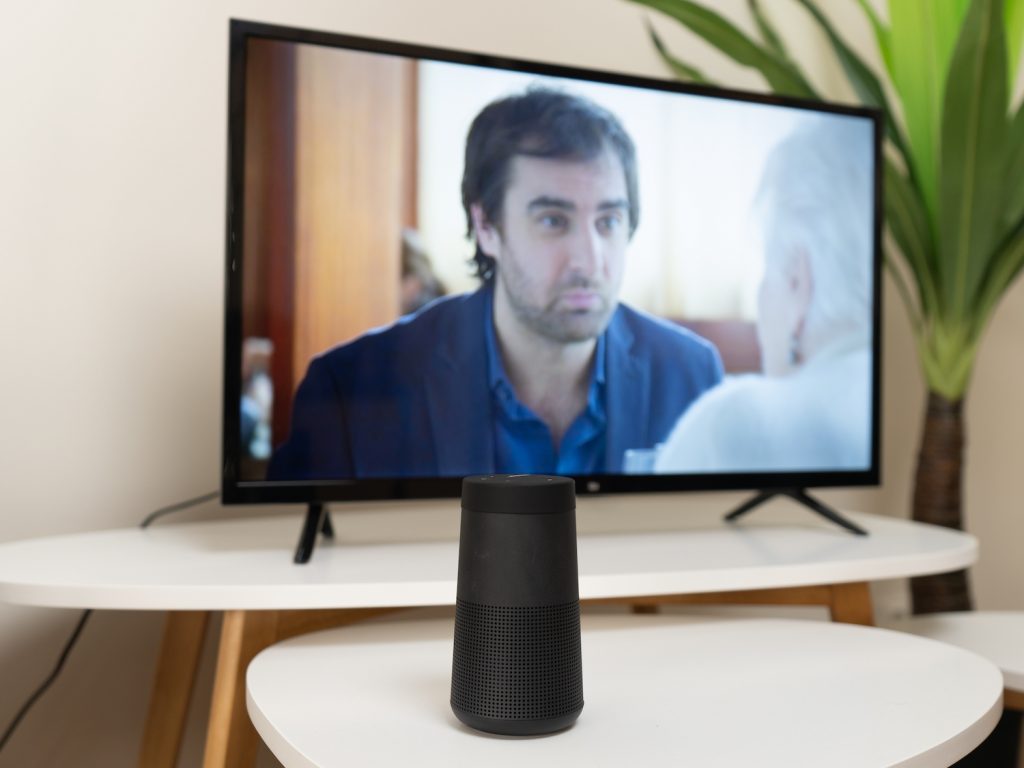
Conclusion
Some of the Bose SoundLink Revolve II’s strengths lie in it design: it’s a small, highly portable, 360-degree-firing speaker that produces decent results in several attributes, especially at low and nominal volumes. Its timbre is pretty good in the upper spectrum, and it produces good localizability, great balance, and few artifacts at low volumes. When connected with its built-in jack to an audio source, latency isn’t a problem for watching video content. But this isn’t a party speaker. Its maximum volume isn’t as loud as other similarly-sized speakers. And at loud volumes, the tonal balance becomes very midrange-focused, with metallic trebles and a strong lack of bass. Bass precision and punch are really affected by the lack of lower spectrum, and those two attributes are also affected by compression that occurs at high volumes.
Pros
- Good upper-spectrum timbre at lower volumes
- Good localizability and distance performances
- No artifacts at low and nominal volumes
- Audio-video latency not a problem when using the jack
Cons
- Inconsistent midrange, with a lack of upper-mids
- Not loud enough at maximum volume
- No wideness, as it’s not a stereo device.
- Bass precision and punch are impaired at higher volumes.


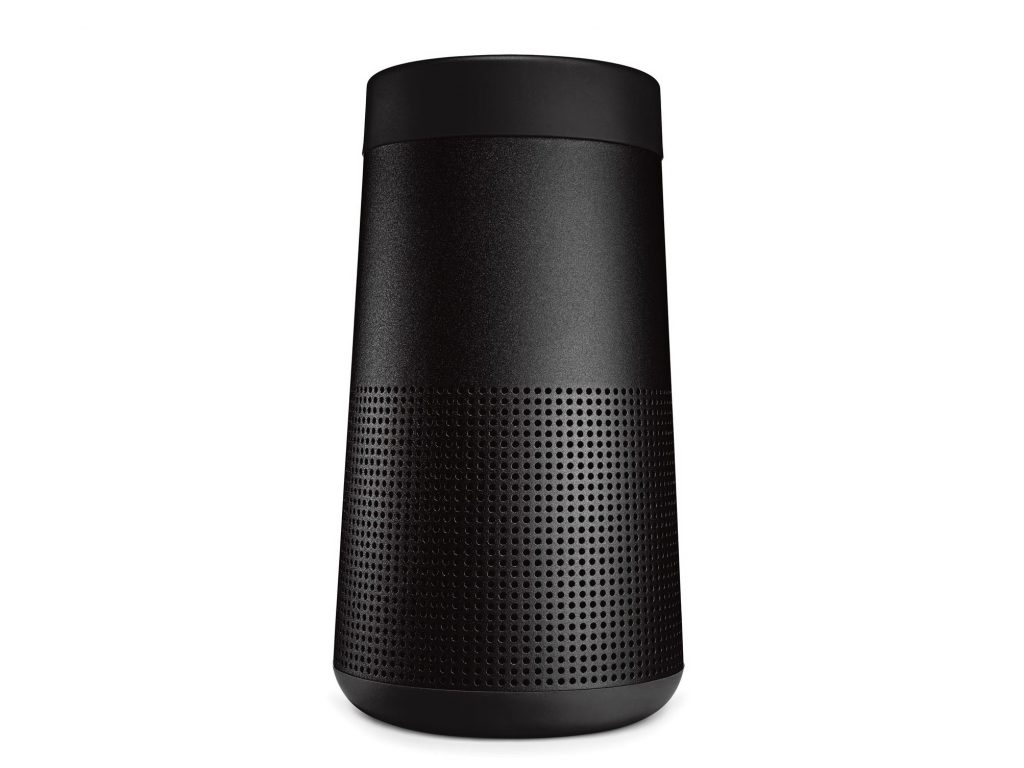
DXOMARK encourages its readers to share comments on the articles. To read or post comments, Disqus cookies are required. Change your Cookies Preferences and read more about our Comment Policy.